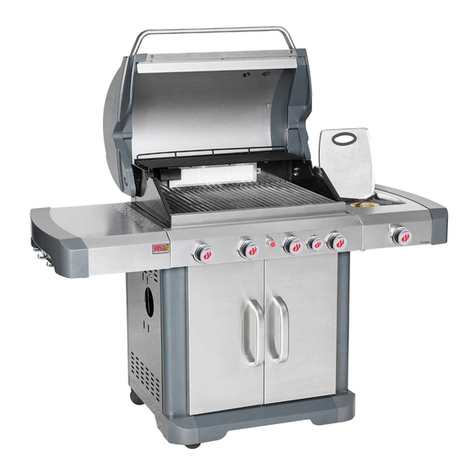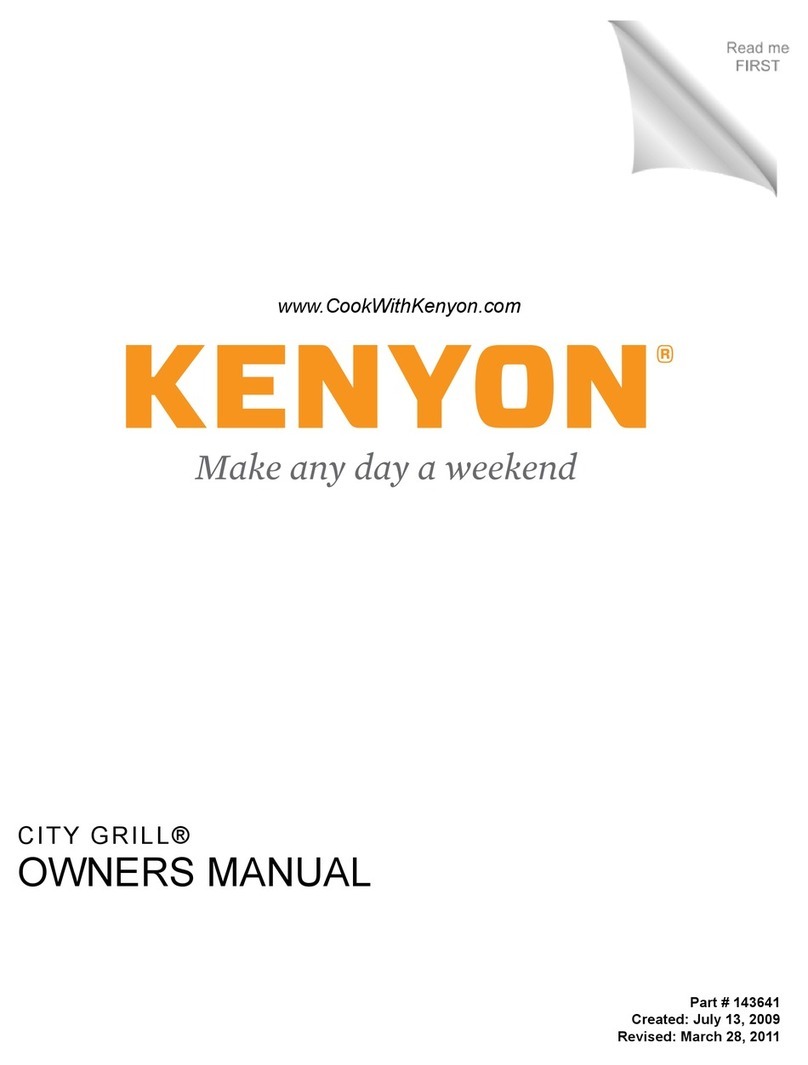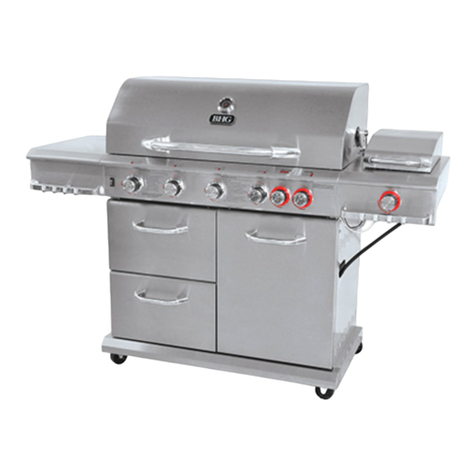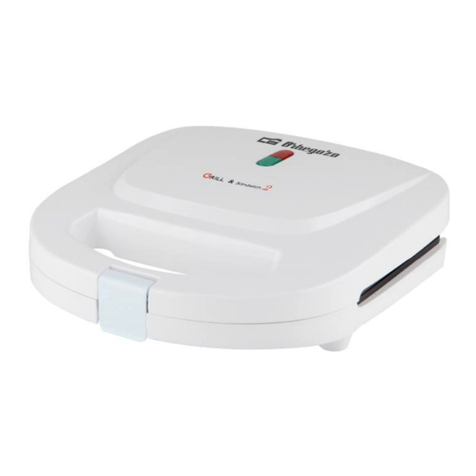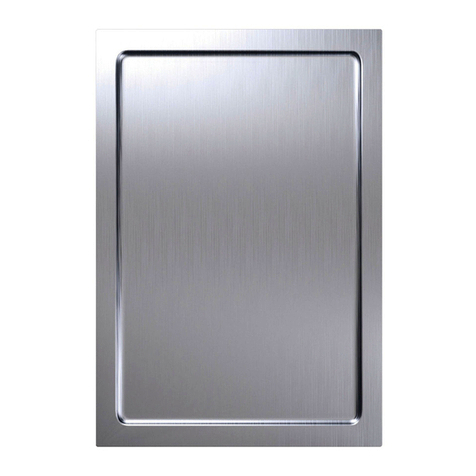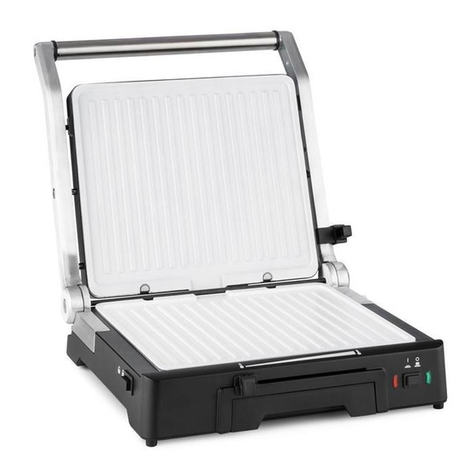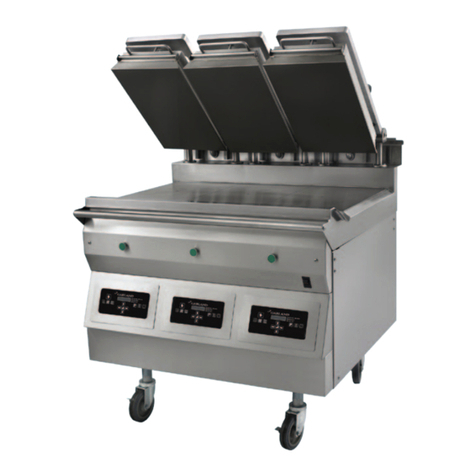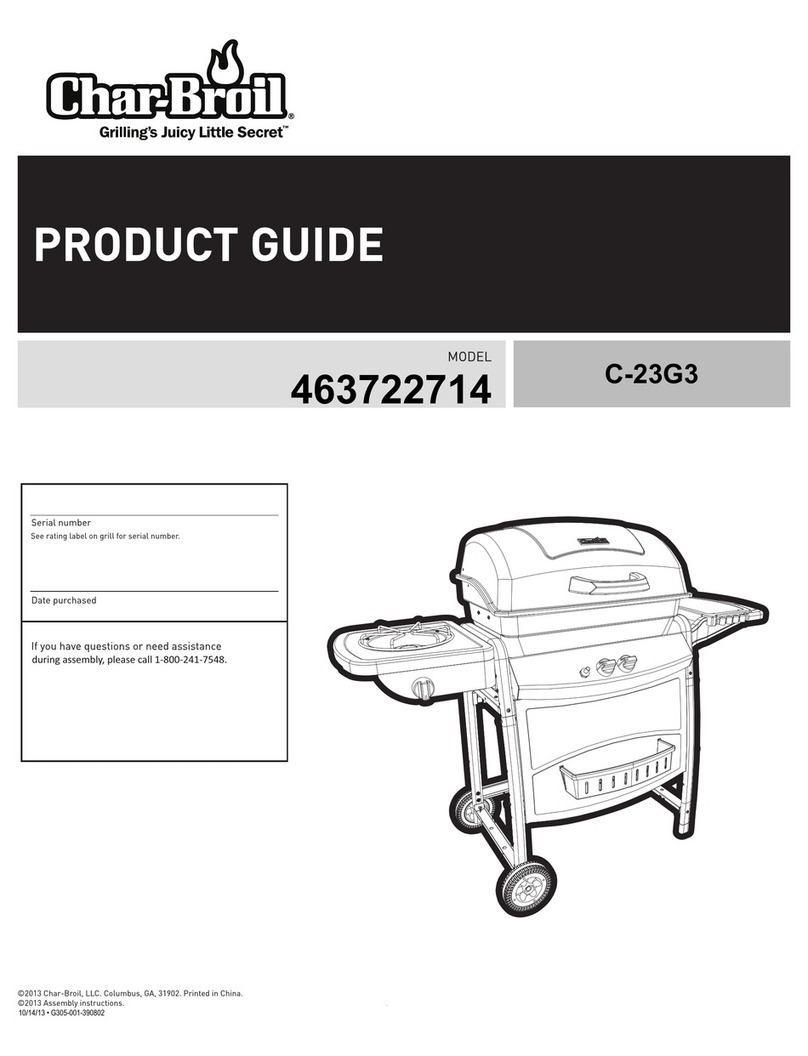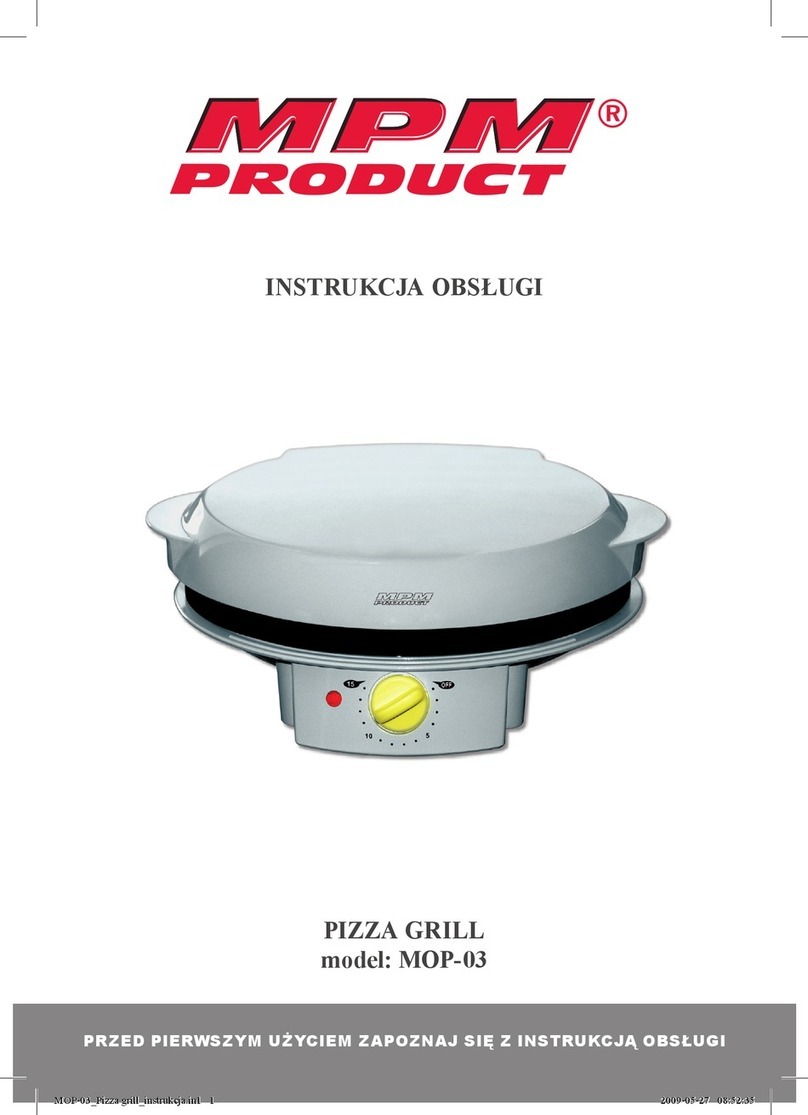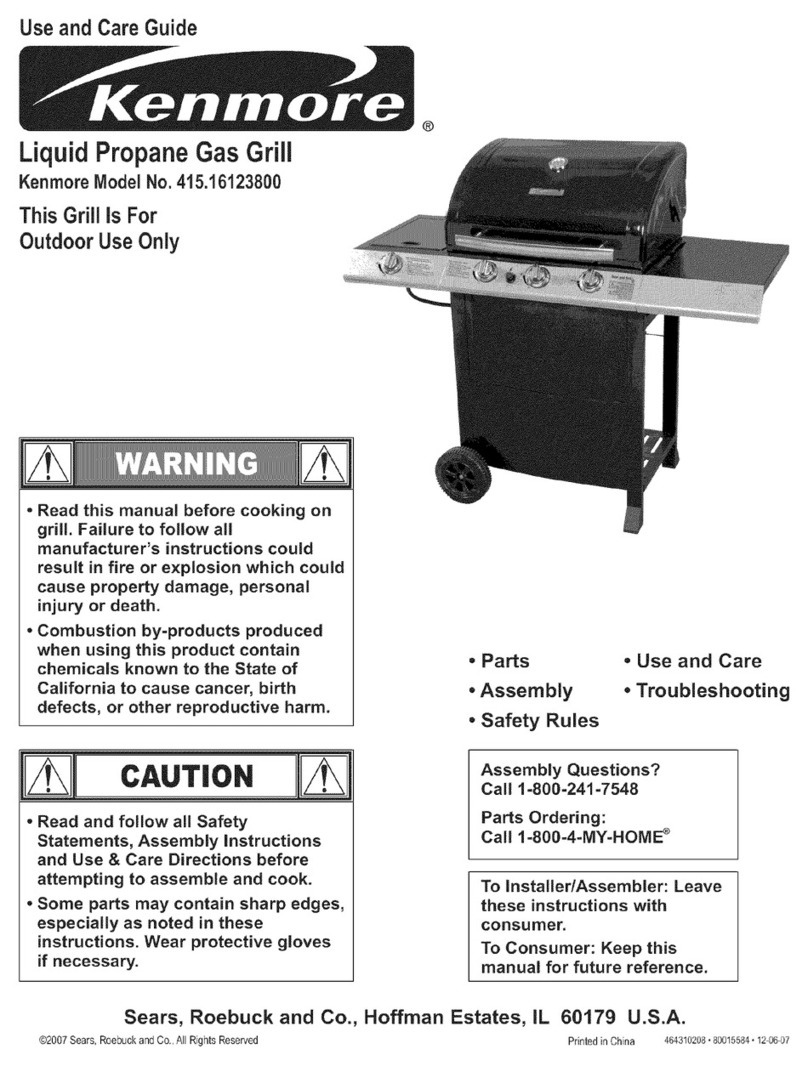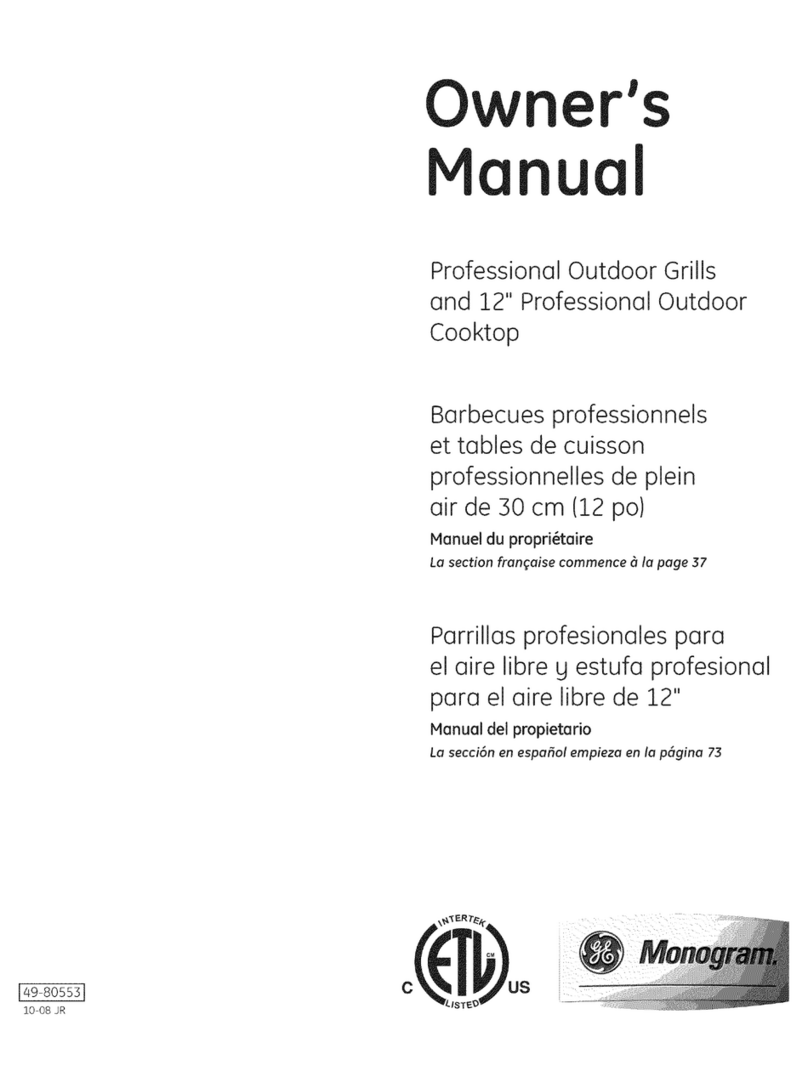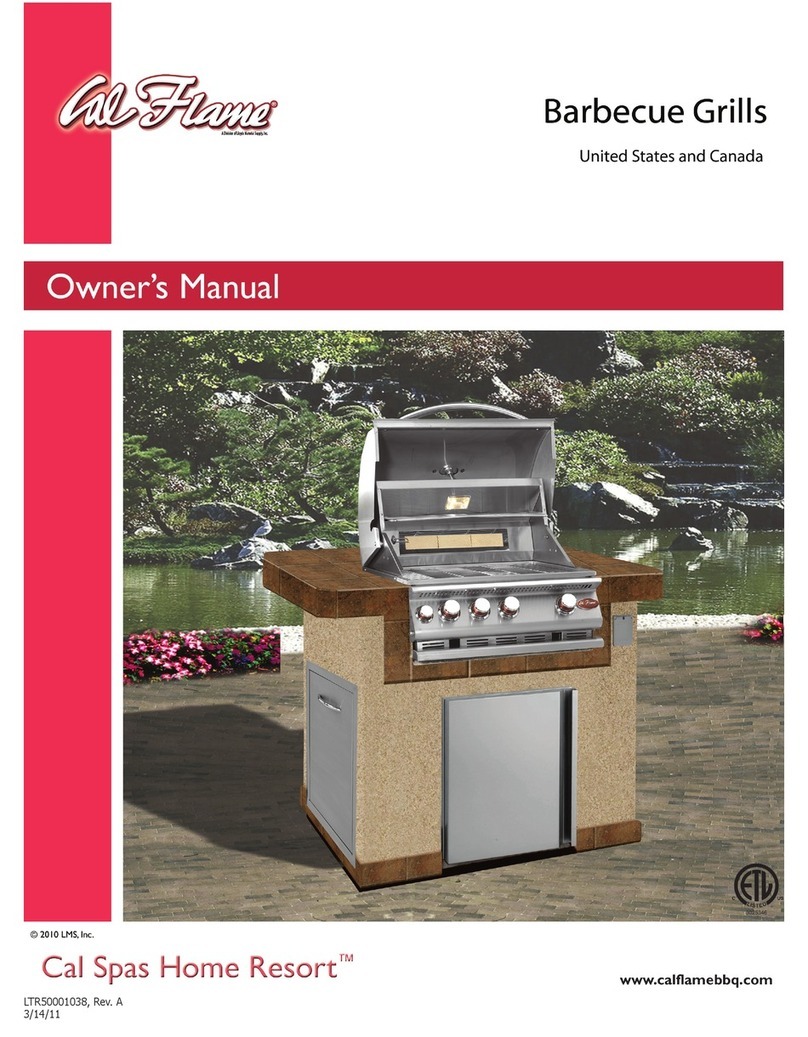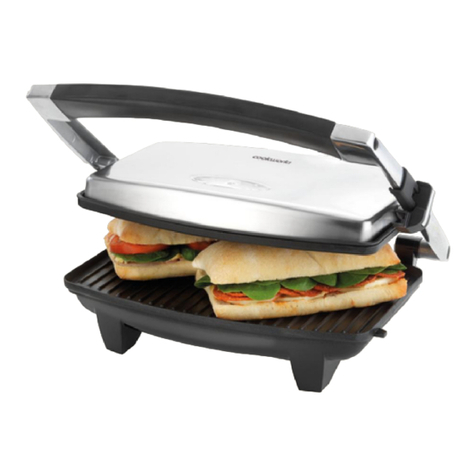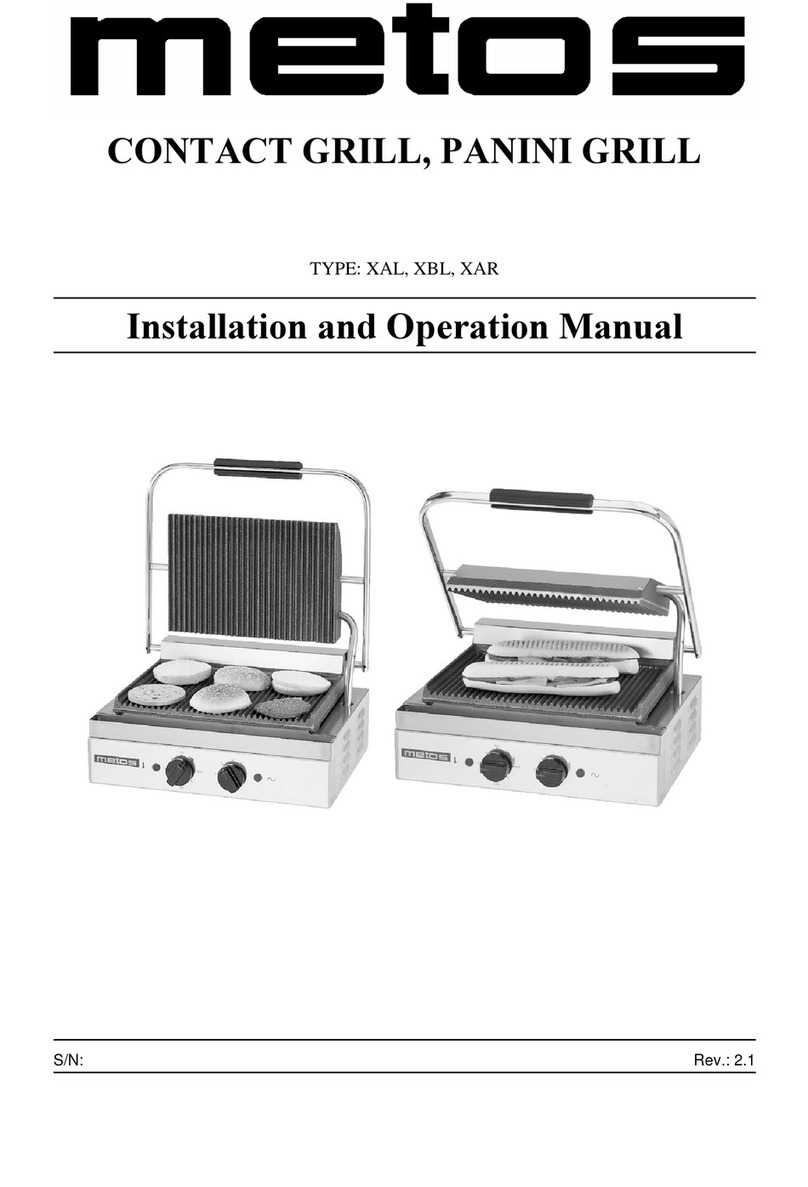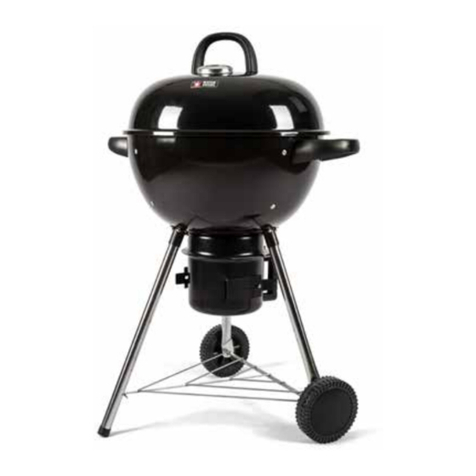common brick in size, which can usually be achieved by
cross-cutting common (18-20") firewood into halves and
splitting as necessary.
●Moisture content: cut, split and air dried for a couple of
months is dry enough. Not freshly-cut; not kiln-dried.
OPERATION
Startup by forming a bed of coals by either the Quick and Dirty
Method
(get a chimney of lump charcoal going and dump the hot
coals into the Firebox) or the Slow and Lazy Method
(stick an
electric charcoal lighter through a Firebox side slot vent, load
wood and have a cup of coffee). Add wood continuously until a
one inch thick bed of coals has formed on the charcoal tray.
DO NOT USE LIGHTER FLUID OR ANY OTHER
LIQUID FIRE-STARTER IN YOUR FIREBOX.
DOING SO WILL VOID THE WARRANTY
Load meat, being conscious of the impact of meat, foil, pans,
etc. on airflow. Forming a “meat membrane” of ribs on a lower
shelf will force the hot smoke to the sides and leave a colder spot
in the center of the Cookbox.
Warmup. Since hot smoke is injected into your Cookbox at the
bottom and cools as it rises to the fan inlets, the bottom of your
pit is hotter than the top. How much hotter is a function of the
meat load and the difference between the meat temperature and
the knob setpoint. For larger (>30#) loads:
●(Easier)
Work your way up to target temperature, e.g., start
at 100-150°F and bump temperature up 25-50°F every time
you add wood.
●(Harder)
For the first 2 hours, rotate shelves every time you
Karubecue LLC C-60 Owner’s Manual Page 9 of 12
